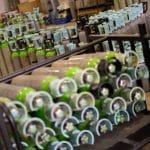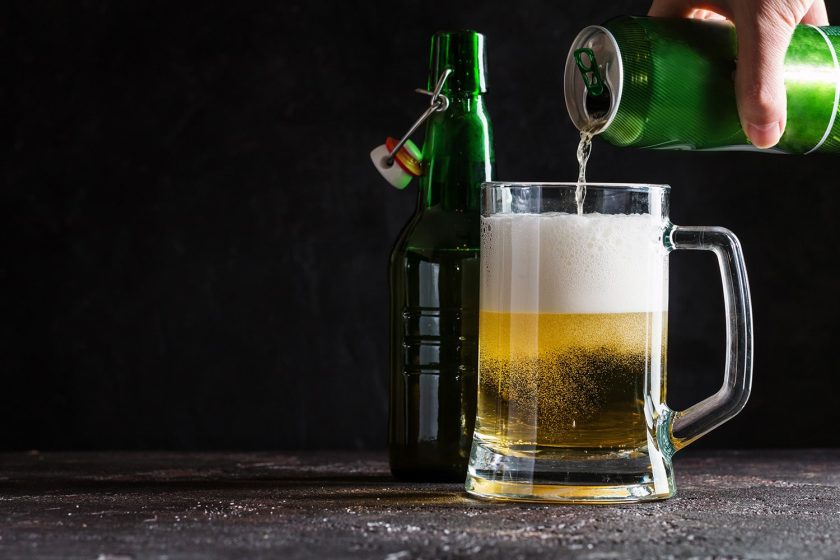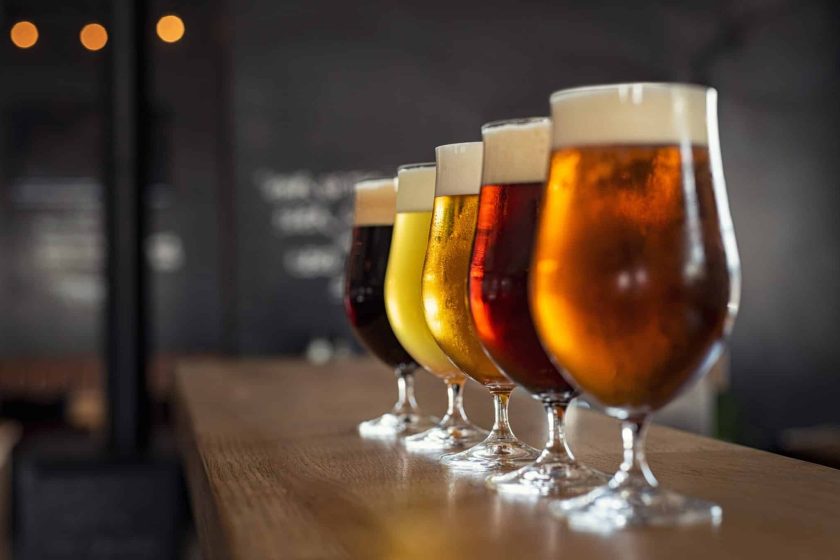As beer enthusiasts, we all appreciate that tantalising fizz and froth when pulling the perfect pint. Have you ever wondered what makes that bubbling magic happen? Look no further than CO2 gas. In this revelatory exploration, we delve into the captivating world of effervescence, uncovering the pivotal role of CO2 gas when pulling the perfect pint. From enhancing aroma and flavour to ensuring that delightful tingle on the palate, the influence of CO2 in brewing is profound. Join us as we unravel the science behind this effervescent enigma, shedding light on the intricate processes that transform a humble brew into a delight for the senses. Whether you’re a seasoned brewmaster or an inquisitive beer aficionado, prepare to deepen your understanding and appreciation of the alchemy that occurs within a perfectly pulled pint. Cheers to the captivating world of CO2 gas and the effervescent charm it brings to our beloved brews.
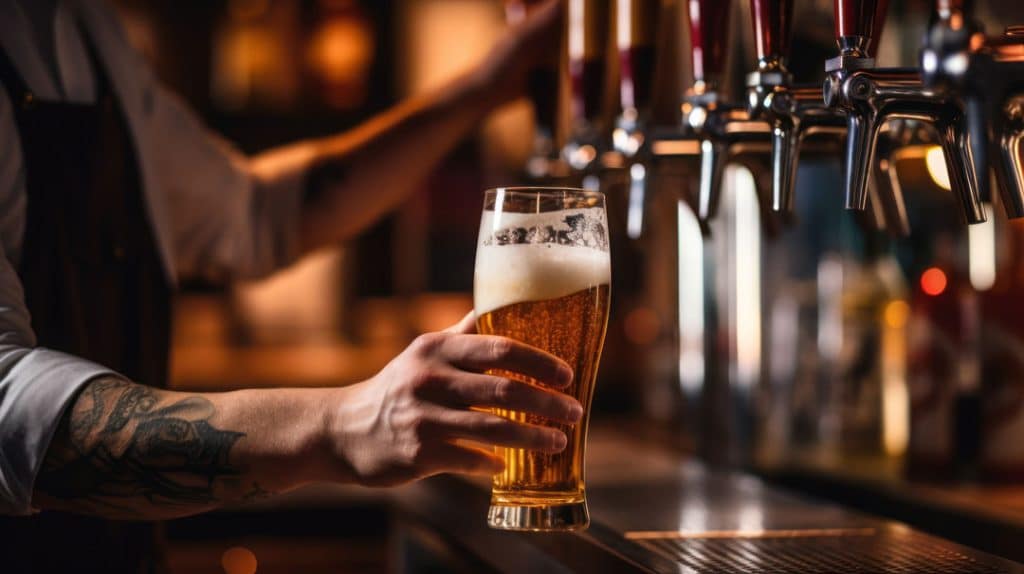
Understanding CO2 in brewing
The process of brewing beer involves several key elements, one of which is carbon dioxide (CO2). Understanding the role of CO2 in brewing is essential for pulling the perfect pint. CO2 gas is a natural by-product of the fermentation process, where yeast converts sugars into alcohol and CO2. This gas plays a crucial role in determining the effervescence and mouthfeel of the beer. By controlling the levels of CO2 during the brewing process, brewers can achieve the desired carbonation and texture, contributing to the overall drinking experience.
When beer is carbonated, CO2 is dissolved in the liquid under pressure, creating those delightful bubbles that we associate with a well-crafted brew. The amount of CO2 dissolved in the beer affects not only its carbonation level but also its aroma and flavour. Understanding the science behind CO2 and its interaction with beer is fundamental to mastering the art of brewing and achieving consistency in the final product.
The presence of CO2 gas also influences the stability and shelf life of beer. By comprehending the dynamics of CO2 in brewing, brewers can ensure that their creations maintain their quality and appeal over time, delivering a delightful drinking experience to consumers.
The science behind a perfectly pulled pint
Effervescence, the formation of bubbles in a liquid, is a captivating phenomenon that significantly impacts the sensory experience of consuming beer. CO2 gas is the primary driver of effervescence in beer, creating the distinctive froth and fizz that characterise a well-carbonated brew. The science behind effervescence lies in the solubility of CO2 in beer, as well as the release of CO2 when the beer is poured or agitated.
The solubility of CO2 in beer is influenced by factors such as temperature, pressure, and the composition of the liquid. When beer is carbonated, it is typically stored under pressure to maintain the dissolved CO2. As the beer is poured into a glass, the release of pressure causes the CO2 gas to come out of the solution, forming bubbles and generating that effervescent cascade of carbonation.
The size and persistence of bubbles in beer are also affected by the presence of nucleation sites, such as imperfections in the glass or rough surfaces, which provide points for the CO2 to form bubbles. Understanding the science behind effervescence enables brewers to manipulate CO2 levels and carbonation methods to create a diverse range of beer styles with varying levels of fizz and froth.
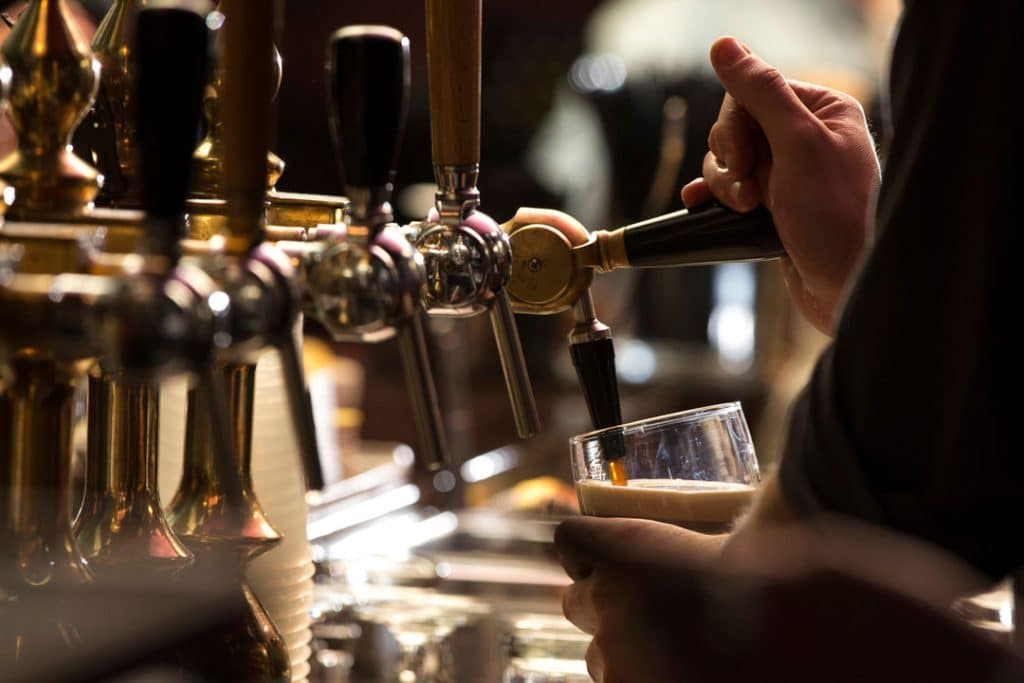
Factors influencing CO2 levels in beer
Several factors contribute to the levels of CO2 when pulling the perfect pint, ultimately affecting its carbonation, mouthfeel, and overall sensory characteristics. The carbonation process involves balancing the amount of CO2 dissolved in the beer with the desired level of effervescence, ensuring that the bubbles enhance the drinking experience without overwhelming the flavour or texture.
One key factor influencing CO2 levels is the pressure at which the beer is carbonated and stored. Higher pressures result in greater CO2 gas solubility, leading to higher carbonation levels in the beer. Temperature also plays a crucial role, as colder liquids can hold more dissolved CO2 than warmer ones. By controlling the temperature and pressure during carbonation, brewers can fine-tune the CO2 levels to achieve the perfect balance for each beer style.
The composition of the beer, including its alcohol content, residual sugars, and acidity, also impacts CO2 solubility. Beers with higher alcohol content tend to hold onto CO2 gas more effectively, while residual sugars can affect the perception of sweetness and carbonation. Acidity, on the other hand, can influence the sharpness and effervescence of the beer, contributing to its overall character and drinkability.
Additionally, the method of carbonation, whether natural or forced, can significantly influence CO2 levels in beer. Natural carbonation, achieved through secondary fermentation in the bottle or cask, results in a softer and more nuanced effervescence, whereas forced carbonation through the injection of CO2 produces a more assertive and consistent carbonation profile. Understanding these factors allows brewers to tailor the CO2 levels in their beers to meet specific flavour and sensory objectives.

Importance of CO2 in creating beer’s flavour and texture
CO2 plays a crucial role in shaping the flavour and texture of beer, contributing to its overall profile and drinkability. When CO2 gas is dissolved in beer, it forms carbonic acid, which imparts a refreshing and slightly acidic bite, enhancing the beer’s crispness and drinkable quality. The presence of CO2 also accentuates the aroma of the beer, releasing volatile compounds that contribute to its bouquet and complexity.
The carbonation level of beer significantly influences its mouthfeel, affecting the perceived body, effervescence, and overall sensation on the palate. Beers with higher carbonation levels often feel lighter and more refreshing, while those with lower carbonation can exhibit a creamier and smoother texture. By manipulating CO2 levels, brewers can tailor the mouthfeel of their beers to complement the desired flavour and style, ensuring a harmonious sensory experience for consumers from a perfectly pulled pint.
Beyond flavour and texture, CO2 gas also plays a role in preserving the integrity of beer, acting as a natural barrier to oxygen and other contaminants. Properly carbonated beer maintains its freshness and stability, safeguarding the delicate balance of flavours and aromas that define each brew. The importance of CO2 in creating beer’s flavour and texture underscores its significance in the art and science of brewing, influencing everything from the initial brewing process to the moment the beer is savoured by enthusiasts.
Techniques for controlling CO2 levels in beer
Achieving the ideal carbonation and CO2 levels in beer requires precision and expertise, with brewers employing various techniques to control and manipulate the effervescence of their creations. One common method for controlling CO2 levels is through the use of carbonation charts, which provide guidelines for determining the appropriate carbonation level based on factors such as beer style, temperature, and desired level of effervescence.
Another technique involves the use of carbonation stones or diffusion stones, which are porous devices that facilitate the dissolution of CO2 into the beer. By introducing CO2 through these stones, brewers can achieve consistent and uniform carbonation throughout the liquid, ensuring that each sip delivers a harmonious effervescence and mouthfeel.
Additionally, brewers may employ spending valves to regulate the pressure inside fermentation vessels, controlling the level of CO2 produced during fermentation and conditioning. This method allows for precise carbonation control and reduces the need for additional carbonation adjustments before packaging the beer.
For beers that undergo natural carbonation, such as those undergoing secondary fermentation in the bottle or cask, careful monitoring of the conditioning process is essential to achieve the desired CO2 levels. By assessing the progress of carbonation and allowing the beer to mature under controlled conditions, brewers can ensure that the final perfectly pulled pint exhibits the perfect balance of effervescence and flavour.
The impact of CO2 on beer presentation and consumer experience
The influence of CO2 extends beyond the flavour and texture of beer, shaping its presentation and consumer experience. The visual appeal of effervescence, showcased through the formation of a frothy head and cascading bubbles, enhances the aesthetic allure of beer, inviting consumers to indulge in its sensory pleasures.
Well-carbonated beers often exhibit vibrant and lively effervescence, contributing to an enticing visual display that complements the overall drinking experience. The sight of bubbles rising through the liquid and forming a creamy head on top of the beer creates an impression of freshness and vitality, signalling to consumers that they are about to enjoy a well-crafted perfectly pulled pint.
The effervescence of beer also influences its mouthfeel and drinkability, contributing to a dynamic and engaging sensory experience. Beers with the right balance of CO2 levels feel lively and effervescent on the palate, stimulating the senses and encouraging further exploration of the beer’s flavours and nuances. The interplay of carbonation, aroma, and flavour creates a multi-dimensional drinking experience that captivates enthusiasts and aficionados alike.
For consumers, the presence of CO2 in beer signifies quality and craftsmanship, with the right level of effervescence signalling that the brew has been carefully brewed and carbonated to deliver an exceptional drinking experience. Whether enjoyed on its own or paired with food, a well-carbonated beer elevates the moment, inviting consumers to savour each sip and appreciate the artistry that goes into pulling the perfect pint.
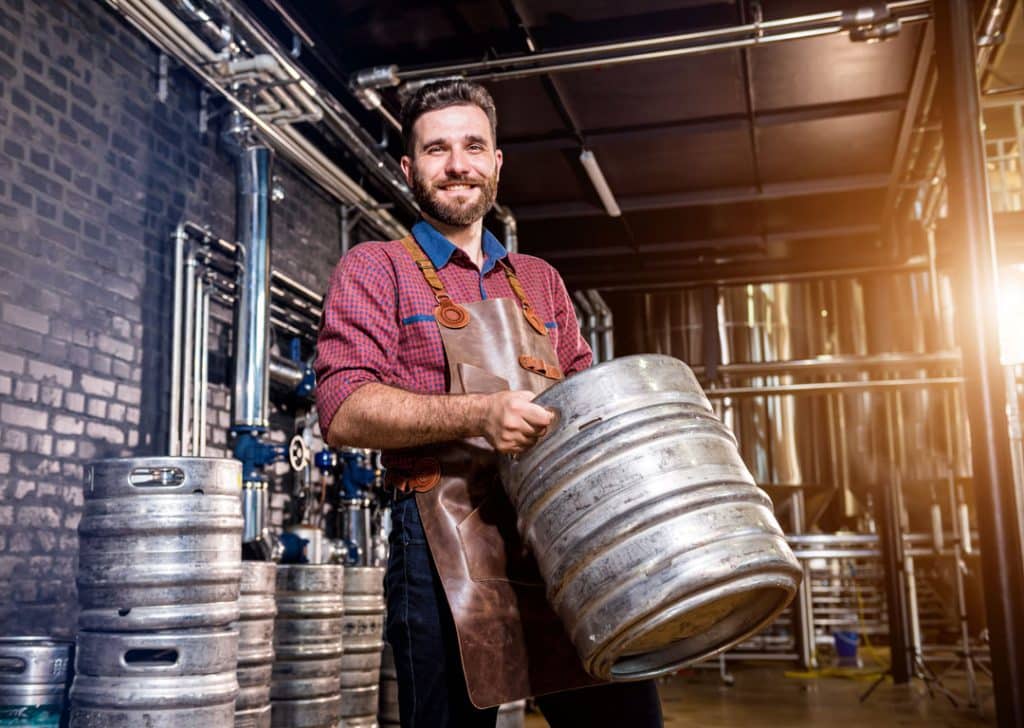
CO2’s role in different beer styles
The influence of CO2 gas varies across different beer styles, with each style presenting unique carbonation profiles that contribute to its character and appeal. Lighter beer styles, such as pilsners and lagers, often exhibit higher levels of carbonation, lending them a refreshing and crisp effervescence that complements their clean and delicate flavours. The lively bubbles and frothy head characteristic of these styles enhance their drinkability, making them popular choices for quenching thirst when pulling the perfect pint.
In contrast, darker and richer beer styles, such as stouts and porters, tend to feature lower carbonation levels, resulting in a smoother and more velvety mouthfeel. The subdued effervescence of these styles allows their complex flavours to take centre stage, providing a luxurious and indulgent drinking experience that invites contemplation and appreciation.
Speciality beer styles, including sour ales, Saison’s, and Belgian ales, exhibit a wide range of carbonation levels, often reflecting the diverse traditions and brewing techniques associated with each style. From lively and effervescent Lambic’s to softly carbonated farmhouse ales, the role of CO2 gas in shaping the nuances of these styles underscores its significance in defining their sensory characteristics and cultural significance.
Understanding the interplay between CO2 and different beer styles enables brewers to tailor the carbonation of their creations to align with the intended flavour profiles and sensory experiences, ensuring that each style embodies its unique effervescent charm.
Balancing CO2 to pull the perfect pint
Craft beer brewing places a premium on quality, creativity, and innovation, with brewers constantly seeking to strike the perfect balance of CO2 gas in their creations. The art of balancing CO2 in craft beer brewing involves meticulous attention to detail, from the selection of ingredients to the execution of brewing and carbonation techniques.
Craft brewers often experiment with diverse ingredients and brewing methods to create beers that showcase a wide range of flavours, textures, and aromas. As such, the role of CO2 in enhancing and complementing these characteristics becomes paramount, influencing the overall presentation and enjoyment of the beer.
Balancing CO2 in craft beer brewing also involves understanding the preferences of the target audience and tailoring the carbonation levels to meet their expectations. Whether crafting a hazy IPA bursting with tropical aromatics or a robust barrel-aged stout with notes of chocolate and coffee, craft brewers consider how CO2 gas can accentuate the unique attributes of each beer, elevating its appeal and desirability.
Furthermore, the creative spirit of craft beer brewing encourages brewers to explore unconventional carbonation methods, such as barrel ageing, mixed fermentation, and natural carbonation, to impart distinct effervescence and character to their creations. By embracing innovation while respecting tradition, craft brewers continue to push the boundaries of carbonation and effervescence, creating beers that captivate and inspire enthusiasts with their effervescent allure.
Conclusion
The world of brewing is fascinating, and the role of CO2 in pulling the perfect pint is essential. CO2 affects the aroma, flavour, effervescence, and mouthfeel of beer, making it a crucial factor in creating a pleasant drinking experience. By studying the science behind effervescence, understanding the factors that influence CO2 levels in beer, and learning techniques for controlling and managing CO2 gas, bars can pull the perfect pint every time.


